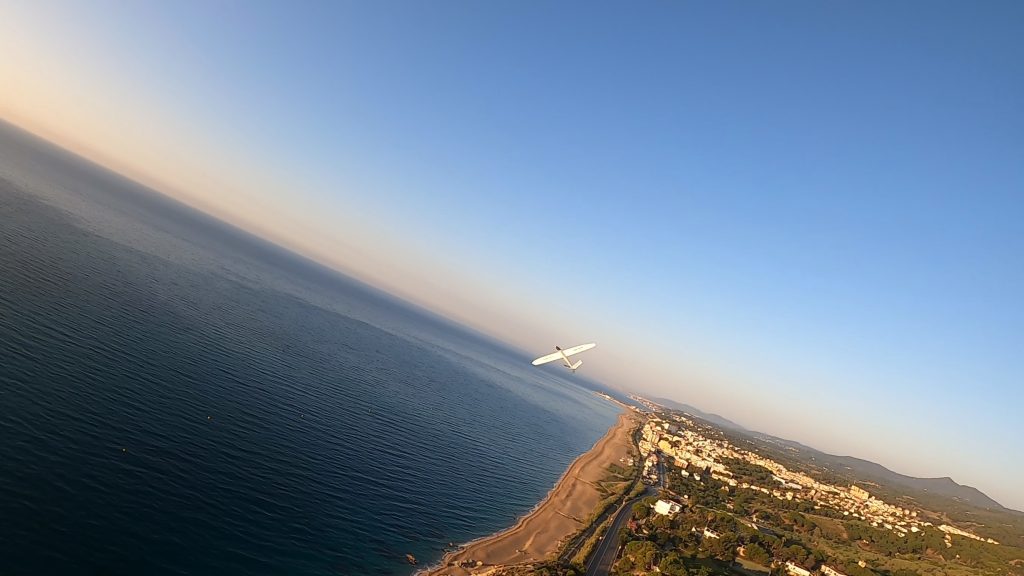Calibre interview: Kelvin Hamilton, Flarebright CEO
The video starts, as so many do, with a view of a drone flying high over green hills in a sunny country. The drone is big, its wings three metres across and it gets buffeted by the wind as it makes its way through the sky. It is being filmed by another drone because it doesn’t carry a camera, and it isn’t navigating through its onboard Global Navigation Satellite System (GNSS) – which is the more usual way of telling a drone where it is, and where it is going. Instead, this drone is running a software programme called Intera from a British company called Flarebright that is exploiting its design data and a component found in most mobile phones to provide a dead reckoning of the drone’s progress towards its pre-programmed route. This technology has a multitude of potential use cases from the civilian and commercial world through to defence, so Calibre met with the CEO of Flarebright, Kelvin Hamilton, to learn more about how Intera works and how the company is working to empower GPS-free flight.
From pipelines to skylines

Kelvin was co-founder of a sub-sea autonomous platform company before founding Flarebright. Credit: Flarebright.
“I started out my career in subsea autonomy, programming autonomous underwater vehicles to carry out oil pipeline inspections and mine-countermeasures,” Kelvin explained in one of Whitehall’s many member clubs. He was a co-founder of a company called SeeByte, which he sold in 2013. “We would deploy them at the start of a pipeline and then they would use SONAR to figure out where they were and then follow the pipeline and inspect it,” he added.
“I started looking at drones not long after we sold SeeByte; I realised that they were just flying lawnmower missions with pre-programmed scripts. For everything sub-sea, there has been a real push for autonomy – no GPS, no radio links – the systems have to work autonomously. But that didn’t seem to be the case in the air until 2019,” he said. NATO countries had nervously watched the development of Russia’s electronic warfare (EW) capabilities and their use in Ukraine. A valuable 2017 report from the International Center for Defence and Security in Estonia went in-depth on the development of Russia’s EW and the various systems that it was developing and deploying in Ukraine. However, it seemed relatively clear that they were focused on NATO command and control infrastructure with only some resources dedication to degrading the West’s GNSS.
“I think a lot of this changed in 2019. I was at an exhibition in Paris where they had jammers and drones in the same area, both conducting live demonstrations. The jammers were stopping any of the drones from flying,” Kelvin explained. Flarebright was working on a microdrone that could be fired from a flare gun at the time and between 2019 and now has received multiple rounds of funding to get its Intera technology up to Technology Readiness Level 7. This essentially means that it has moved from a concept through to a system that has been tested in an operationally relevant environment. “This has all happened through funding from the British MoD, which is quite rare,” Kelvin added.
“We’re now working on a range of projects from commercial delivery services in the civilian world, through to long-range precision strike for defence,” he said. “If you look outside, there aren’t any drones flying around delivering packages, even though it’s technologically possible right now. One part of the reason for this is that GPS cannot be reliably guaranteed. If it gets jammed and there are a hundred drones in the air operating autonomously, they would either try to return to the last known point with GPS, or just fall out of the sky,” he went on to explain. So, safety is a critical concern for the operation of drones in the civilian sphere, which makes resilient autonomous navigation a priority.
Tech profile: Intera

Using the Intera software from Flarebright, a drone has flown over both land and sea without GPS or computer vision, which can be a challenging task for a UAV. Credit: Flarebright
Intera is a software solution that exploits surplus data generated by a drone that is generally wasted. This might include things like the RPM of the motors or commands from the flight control unit. The Flarebright team extracts up to a minute of flight data from the drone and then builds a digital model based on the surplus data combined with a set of machine learning algorithms built by the company that design a software solution optimised for the drone in question. “The comms bus on the drone has lots of data about RPM etc that we can hoover up. For example, if the drone control unit tells it to tilt to an angle of ten degrees, we know that it takes half a second and will be 11 degrees,” Kelvin explained.
This is combined with the MEMS chip – Micro Electro-Mechanical System – a chip that employs accelerometers, gyroscopes and other mechanical systems that measure physical changes to the direction of the carrying system. This might be a movement forwards or backwards, up and down, or tilting left to right. “We take that MEMS chip and make it brilliant,” Kelvin said. The software then takes account of all of the factors impacting a drone’s navigation and combines it with the MEMS chip to provide a dead reckoning of where the drone is according to its start point. “We only need a GPS reading of the start point, but you can also type in a grid reference if GPS is denied,” Kelvin added.
This reduces the navigation error, typically measured in km/hour, when compared with high end tactical inertial systems. A tactical inertial navigation system (INS) will have a navigation error of as much as 17 km over the course of an hour, if it is not able to re baseline and establish its position from other means. A navigation grade INS can provide a much more accurate return over the same time period, but it will come at much greater cost. The Flarebright solution has managed to get 50% of its flights within a navigation error of 8 km. “The MEMS chip and Raspberry Pi computer that we can run on cost maybe $30 altogether,” Kelvin explained, adding that the value is in using software to enhance the performance of existing hardware at much lower cost than using exquisite systems to provide entirely resilient solutions for the same problem.
“It’s not designed to be the only form of navigation, but it can be. Ideally you would pair it with GPS and maybe even computer vision, providing a very robust navigation solution,” Kelvin finished by saying. “This applies to defence and the commercial world, we need precision navigation to be much cheaper and much more resilient than it is,” he said.
Calibre comment
Inertial navigation has always been a component of navigation in the world of defence. It is a relatively reliable form of measuring how much the vehicle’s position has changed in relation to the starting position. Submarines may use extremely expensive and exquisite gyroscopes and inertial measurement units to track their position and navigate whilst submerged. However, there is a growing emphasis on attritable systems, which require attritable software and components. If it is not economically viable to fit a swarm of strike drones with exquisite INS, and GPS can be effectively jammed, then an alternate solution that meets these criteria using existing and proven technology like MEMS chips could be a very promising avenue.
By Sam Cranny-Evans, published on 28th January 2025.

Sign Up for Updates!
Get insider news, tips, and updates. No spam, just the good stuff!





